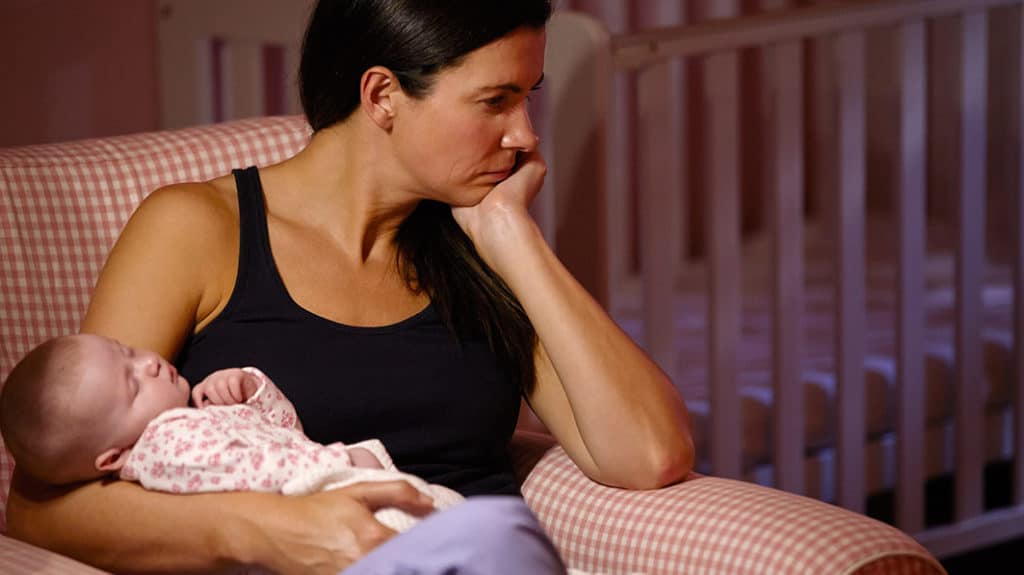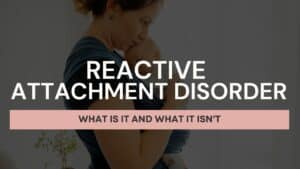When our first child, Eleanor, entered the world, my husband and I had a rough start. Motherhood was nothing like what I’d envisioned. My pregnancy was difficult, labor was terrifying and our daughter’s first three years were filled with life-threatening illness. I also had problems bonding with my daughter. When I saw that my husband’s bond to Eleanor was stronger than mine, it only added to my guilt and shame. And to his sadness.
My heart longed to feel connected to our daughter. But so much interfered with the connection. Eleanor was easily overwhelmed by sensation; even changing her shirt or diaper or taking a bath would cause her to cry — a lot.
Eleanor’s early years were a challenging chapter, but they were not the only chapter. With time, grace and effort, our family has developed closer bonds with each other. It’s not uncommon for one parent to bond more naturally with a child than the other parent. Some of the steps that helped us strengthen our relationships may help you, too.
Admit there’s a problem
When Eleanor was a newborn, I was afraid to be alone with her because nothing I tried seemed to console my baby. My mothering instinct was working, but it was telling me that something was wrong. I didn’t know what to do.
Eventually I couldn’t bring myself to get out of bed, even when Eleanor would wake up crying in the night. My husband was the one who was able to comfort her, but he felt frustrated and disappointed that I didn’t help more. And I internalized that I was the one who had caused her to be sick. Rather than bonding, we subconsciously pushed each other away.
One day I finally broke down and ugly-cried in my women’s small group, admitting that parenting Eleanor was the hardest thing I’d ever gone through. I made a plan that night to seek help. Admitting you’re having trouble bonding with your child is difficult, but don’t let your hurt feelings derail the process of healing. Recognize there’s a legitimate problem and seek help.
Consider professional help
When you believe professional help is necessary to achieve bonding, ask your pediatrician, friends, family or other experts for recommendations. Then seek out child psychologists or occupational therapists who specialize in attachment issues. Listen to your instincts as you interview them and consider which professional will have a good connection with your child and family.
Eleanor’s troubles went beyond common newborn and infant fussiness. They were excessive and ongoing due to greater sensory issues: She was diagnosed with tactile dysfunction disorder.
Some sensory issues can be addressed in infancy. We dealt with others during Eleanor’s toddler and preschool years through “play therapy,” which involved games or exercises that are fun for a child. These activities helped her practice deeper neurological development, improving her sensory functionality.
Use honesty, teamwork and understanding
I had to quash my pride and be honest with my husband. I needed extra time to deal with this problem, without the fear of putting too much on his plate. He understood that I was struggling, and he supported me by cooking dinner so Eleanor and I could play games. He listened patiently as I shared new insights I was learning from therapy and books.
My husband had frustrations about how much of our home life was affected by his child’s sensitivities and his wife’s insecurities. I had to let go of offense and give him room to experience his own emotions. As we dove deeper into therapy, practicing what we learned, the less vulnerable we felt.
My husband and I both needed to remember that we were on the same side, even when we were frustrated. Practicing open, nondefensive communication helped us survive in the short term; it also helped our family grow together instead of apart in the long run.
Share the load . . .
. . . even when you don’t feel like it. One of my homework assignments from our therapist was to tell my husband I would take care of Eleanor when she woke up in the middle of the night. I would be the one to help her feel better. Eleanor may have wanted Daddy at first, but as I responded to her needs she gradually learned that she could trust me. And I grew more confident that I could give my daughter what she needed. Eleanor seemed to feel my growing confidence in being a mom, and she began to relax in my care.
Practice healthy touch
I found that putting lotion on my daughter after a bath also helped her relax and helped us build our bond. I learned some baby-massage techniques that seemed soothing. I also learned that skin-to-skin contact is helpful during the newborn phase. Rocking your child before naps and bedtimes helps in building attachment.
As Eleanor grew, I drew with my finger on her back while she tried to guess the picture. Using touch on her back, I would also “plant” a garden. The garden could be full of dolls or flowers or even monster trucks. Let your child choose what type of garden you will draw, the colors and designs, and then bring it all to life with the touch of your finger.
And at any age, hug your child as often as he or she will let you. But note that if you’re dealing with a sensory processing disorder, talk with your therapist. Sometimes touch can do more harm than good, if done incorrectly.
Make time together
Bonding certainly begins with newborns, but it doesn’t end there. If the process is hard, try finding an activity that helps you both. For example, taking a walk with your child resting in a stroller or nestled against you in a strap-on child carrier can sooth your baby and help the two of you bond.
As your baby grows into toddlerhood, read stories together. Cook together. Fingerpaint together. Play together. Let your child lead, and try your best not to have an agenda for that time. Whatever he or she loves to do, do it as a family on your child’s level. If you are the parent struggling with the connection, watch and listen carefully for verbal and visual cues that engage your child and help build connection with your spouse. Then try the same things yourself. After all, you and your family can develop strong bonds with your child, even after you’ve gotten off to a rough start.























